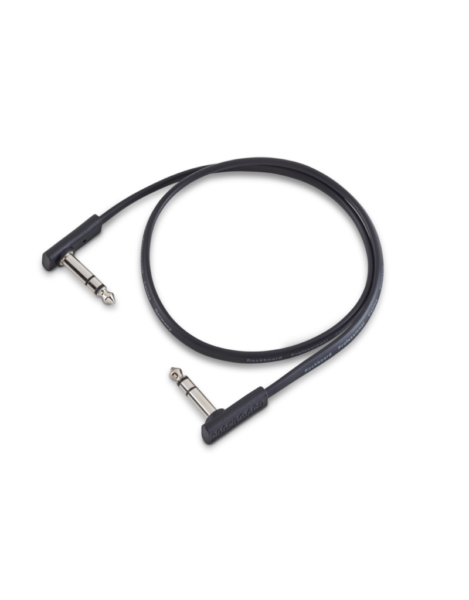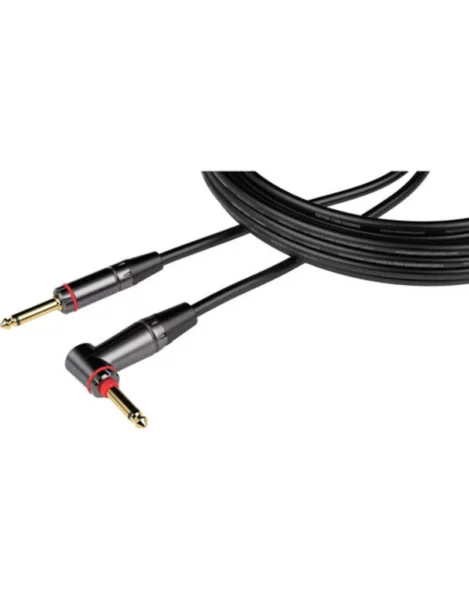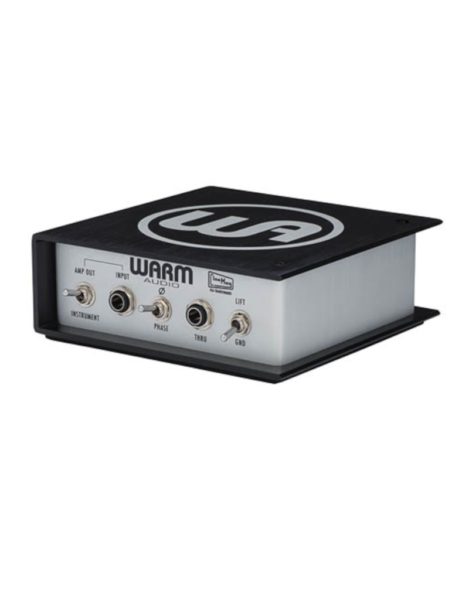If you’ve been playing guitar long enough, you’ve probably got a heap of random cables in your practice space or studio. You’ll reach for one for the keyboard player, second guitarist or maybe a vocalist. There’s of course 1/4’ cables, XLRs, RCA, or speaker cables… but which types of audio cables are right for the job? Here we’ll discuss some cabling basics to help you choose the right type of cable every time and for every application!
The 1/4″ Cable
Let’s start with the classic and ubiquitous 1/4″ cable. It’s the one that you’ve been using for your guitar, bass, or possibly your keyboard. Generally, these cables come in the TS or TRS varieties. These acronyms stand for Tip/Sleeve and Tip/Ring/Sleeve respectively.
TS cables are used for mono signals and very commonly unbalanced signals. This equates to a single channel of your mixing desk or the input of most guitar amps and pedals.
TRS cables are used for stereo signals and balanced connections, but can also work for mono signals as well. TRS cables work particularly well in situations requiring long cable lengths because the balanced signal reduces unwanted noise and interference.
So what’s the difference between balanced and unbalanced?
To put it simply, balanced audio is sent through three conductors within the cable itself; two used to carry the positive and negative signals, and the third for grounding. Unbalanced audio is sent through cables with two conductors; one used for the positive signal and the second doubling as the negative and ground.
It’s important to note that balanced and unbalanced signals generally have different amounts of gain. +4 dB balanced signals insure that long cable runs provide the right levels with minimal noise, whereas unbalanced -10 dB signals provide instrument or line level signals. The main thing to consider is where your signal is headed in terms of a mixing desk, a guitar pedal, a guitar amp, or a DI box.
Shielded Cabling
In addition to the type of signal and its relation to noise, the shielding built into a cable is important to consider. The thickness of the cable, and whether or not it is shielded with an additional braiding of metal internally will help it resist unwanted noise. When combining shielding with higher end, gold plated connectors also lends to stronger connections and better conduction of the signal.
When it comes to patch cables for guitar pedal boards, there are many options with their own distinct benefits and drawbacks. Our most popular patch cable option is the Rockboard Flat Patch Cable since it provides great signal quality and a low profile for building tightly configured pedalboards. These cables come in precut lengths and shielding options. However sometimes a cable off the shelf just doesn’t quite fit the pedalboard you’re working with. There are also solderless patch cable kits, allowing players to cut their own cable lengths and install connectors themselves. While this is a great option to build a completely custom board, some players prefer the ease and ability to replace cables quickly found with pre-build cables.
The XLR or Mic Cable
Finally, as we move into the world of hybrid amp modeling setups, live rigs, and studio applications it’s time to talk about XLR connections. An XLR connection is most commonly found with microphones, mixing desk inputs, recording interfaces, and studio gear. Of course with the rise of amp modelers and lower stage volume setups, more players are finding they need a way to take their unbalanced guitar or bass signals and send them to additional units for processing.
Learn About DI Guitar Recording Here
To start, XLR connections are most commonly balanced signals and usually mono. They feature locking connectors for peace of mind and professional accuracy. Most guitar players will encounter XLR connections at the end of a mic capturing their cab or vocal, but these days its the preferred way to send a DI (direct injection) signal from amp-in-a-box pedals or bass amps on stage. With the rise of products like Helix, UAFX, Strymon Iridium, and others, the need for DI Boxes is greater than ever. These boxes essentially take an unbalanced input and transform it to a balanced output with the proper gain structure to be input to a mixing desk, PA system, or interface.
The top FRFR speakers used for modeling provide their own XLR outputs, such as the Line 6 Powercab or Fender FR12. However if your rig doesn’t include a speaker or external cabinet, having a DI box for a modeler is absolutely essential. Only better yet is having a line isolator option as provided by the Walrus Canva. One key piece of information in all of this is that the longer your cable length, the more prone you are to signal loss and interference. However, this can be mitigated with higher quality cables providing shielding or balanced connections.
If you’re looking for premium or economy level cabling, Tone Tailors has it all and can lead you through your next pedalboard or studio build with ease!



